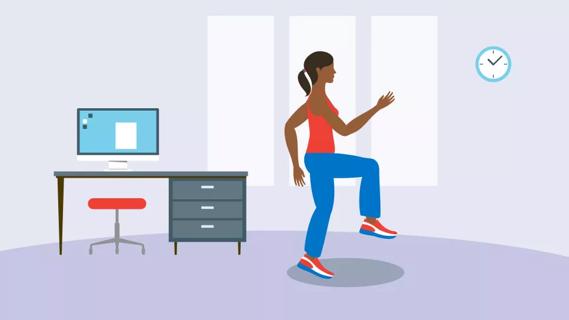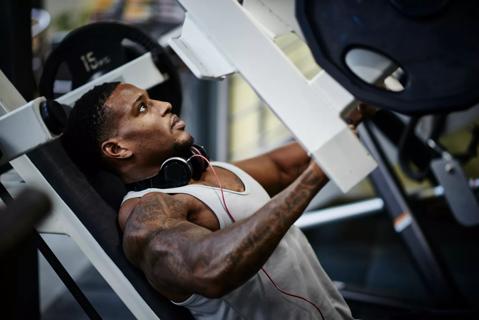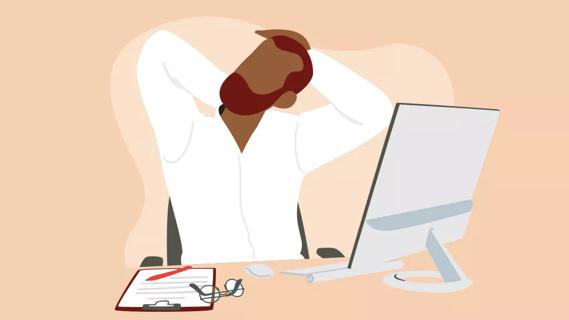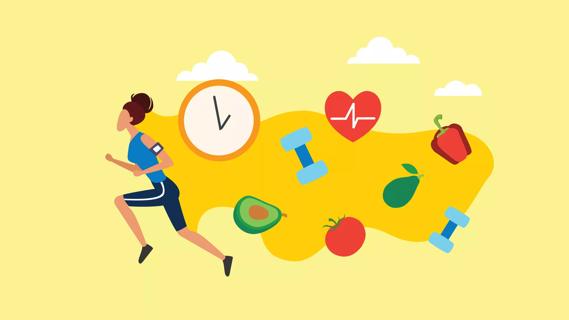The truth about protein shakes, plus what to eat

You’re committed to regular workouts, hitting your groove with daily cardio. Perhaps you’ve discovered the joy of rushing endorphins filling your brain after a morning run or Pilates has transformed your life. But to truly hit your fitness goals, it’s important to also reevaluate how you fuel your body — both before and after you exercise.
Cleveland Clinic is a non-profit academic medical center. Advertising on our site helps support our mission. We do not endorse non-Cleveland Clinic products or services. Policy
Regardless of whether you want to burn fat or build muscle, you’ll need three things to help your muscles recover: good carbs, lean protein and plenty of water, says Kate Patton MEd, RD, LD, CSSD.
When it comes to protein shakes, Patton says, “They’re portable and convenient to drink immediately after your workout, but be sure to choose a quality product.”
The Food and Drug Administration does not test for the safety and efficacy of dietary supplements. Be sure to buy products that are third-party certified, which means an outside company has tested the ingredients to ensure they match the label and that they do not contain banned substances or fillers.
Also check to see how much added sugar it contains. Many store-bought shakes are loaded with sugar. The best kinds? They’re the ones you make at home from fresh ingredients and whole foods.
“I recommend a homemade shake include a protein source (powder, milk, yogurt, kefir), fruit, vegetable, and healthy fat source (nuts, seeds, avocado),” says Patton.
She says it’s okay to add some optional extras, but to make sure they include minimal added sweetness from honey/agave/maple syrup or other flavor enhancers like vanilla, cinnamon, ginger, or turmeric.
But don’t limit yourself to shakes. “There are many protein-rich snacks like yogurt, cheese, nuts and even hummus, you can pack in your bag for post-workout,” says Patton.
Other good, lean protein options include:
Another misconception is that the best way to fuel your body is with protein. Carbs — specifically complex carbs (not simple carbs) — are found in fruits, veggies and grains, and they play an important role in helping your body recover post-workout.
Exercise also naturally lowers blood sugar, and if it lowers too quickly or too low, you could become hypoglycemic. That’s why carbs are important to refuel and recover from a tough workout.
“You need some carbs to prevent muscle breakdown,” says Patton.
So, how do these carbs differ?
Simple carbs: These carbs have one or two sugars in them. Think sweets: candy, sugar, cakes and cookies. These should be avoided when you’re trying to get fit except for special occasions or an indulgent treat.
Complex carbs: As their name suggests, these carbs have three or more sugars in them and they’re important post-workout. “Your body needs complex carbs to rebuild glycogen stores that are important for recovery,” says Patton. Complex carbs also take longer to digest and aid in digestion because they often contain fiber.
Some complex carb options:
You need plenty of water before, during and after your workout. One study found you perform your best when you consume between 400 to 600 ml of water pre-workout. Not only that, researchers found athletes’ perceived effort remained lowest when water they consumed closely matched how much they lost through sweating. In other words, the more you drink, the easier your workout feels.
Drinking water does so much more than put liquids back into your body after you sweat. Patton notes It also replenishes electrolytes, sodium and glucose when you exercise.
But what’s more, water helps regulate your body temperature so you can cool down after that workout. It also helps ward off muscle cramps, removes toxins from your body and transports nutrients to parts of your body that need it most after expending so much energy.
The short answer is, yes! But here’s why.
Food is your body’s fuel just as gasoline is to your car. The comparison may be cliche, but it’s true. If you’re running on empty, you’re not likely to bang out a strong workout.
“Before any workout, it’s best to consume some complex carbohydrates 2-4 hours before for sustained energy,” says Patton. She suggests eating a good balance of protein plus carbs for energy. Oatmeal or yogurt with fruit and nuts are two prime options.
If exercising for less than 60 minutes, it is okay to exercise on an empty stomach in the morning, but don’t go all day without eating and then try to exercise.
If you’re ravenous when you cross the finish line or do that last set of reps, there’s a good scientific basis for that. Eating within 30 to 60 minutes of your workout is critical to help with muscle repair. But keep in mind: Any post-workout meal should contain a mix of carbohydrates and protein.
“Anyone whose goal is to build strength and muscle should eat a 2:1 ratio of carbohydrates to protein to ensure adequate muscle repair and recovery,” says Patton. “If you’re a high endurance athlete, we typically recommend a 4:1 ration of carbohydrates to protein.”
More of a casual exerciser or age 50+? A good ratio is 3:1.
As you begin to make healthy changes to your lifestyle, you may be baffled by how to approach meal planning. After all, even good-for-you changes are sometimes a bit unfathomable.
Breakfast – “Aim to eat enough protein, such as eggs and whole-grain bread,” says Patton. “Another option is Greek yogurt with bran cereal and fruit on top, or toast with peanut butter or nut butter and banana. Or try a fruit smoothie,” says Patton.
Lunch – At mid-day, include a protein source, a few more carbs and vegetables. For example, you may want to try a piece of chicken or tuna with cucumbers and peppers on the side, along with some fruit. Including some good fats in your lunch will help carry you through until dinner time.
Snacks – Finally, before you hit the gym or head outside for a run, grab something with complex carbs, like an apple.
Dinner – A lean protein source, like salmon, which is packed with omega-3 fatty acids, coupled with additional good carbs, such as quinoa or sweet potato and a salad should carry you through until bedtime.
Remember: Healthy food choices don’t have to be bland or tasteless. Looking at food as fuel for your most important asset — your body — will help guide you toward making healthy choices. And, as always, be sure to consult with your doctor before starting any exercise program.
Learn more about our editorial process.

Research suggests the effect of the supplement, particularly for prostate health, may not deliver believed benefits

Both are needed for a healthy body

Counteract psoas muscle stiffness and soreness with stretches that lengthen and strengthen

It may be OK, depending on your health, fitness level and type of exercise

Simple exercises like wall angels and pelvic tilts can help keep your body in an optimal position — and help undo years of improper posture habits

Genetics, metabolism and hormonal fluctuations can all make weight loss more difficult

Losing belly fat can reduce your risk for chronic health conditions — try focusing on a diet high in lean protein, exercising regularly, reducing stress and getting quality ZZZs

It’s best to exercise before or after your fast, instead of during it

Your metabolism may torch 1,300 to 2,000 calories daily with no activity

A gentle touch in all the right places may help drain your sinuses